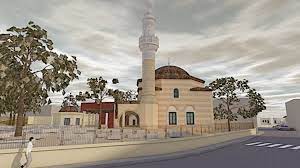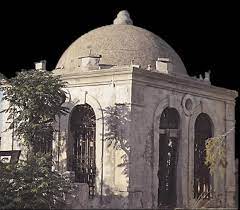Greece to Restore Ottoman Admiral’s Splendid Mausoleum on Rhodes

Islamabad: Ministry of Culture announces restoration work on eight-acre site on Rhodes hosting the tomb of a 17th-century Ottoman admiral – and seen as an important example of ‘Ottoman Baroque’ style.
Greece’s Ministry of Culture has announced that the Murat Reis complex, an important Ottoman monument on the island of Rhodes, on the Dodecanese, is undergoing restoration. The complex, which includes a mosque and mausoleums, is a UNESCO World Heritage Site.

“The Murat Reis Mosque, which has remained closed since 2000, is a very important monument of local Muslim history. At the same time, it is a special example of architecture, which combines characteristics of the Ottoman Baroque era with Egyptian and neoclassical elements,” Minister of Culture Lina Mendoni said in a press release issued on March 21.
The eight-acre complex was built in the 17th century on the northern end of Rhodes town, outside the medieval walls on the seafront, where it was also the town’s administrative centre.
Murat Reis, an important admiral under Sultan Suleyman “the Magnificent”, was born on Rhodes and played a pivotal role in the island’s conquest. He was buried in a cemetery within the grounds.
The complex was built by Ebu Berk Pasha and then rebuilt in 1797-98 by Murabit Hasan Bey. It includes a mosque, a tomb, a purification fountain, a “tekke” (hermitage of dervishes), the guardian’s residence, and the cemetery, in which seven domed mausoleums stand out.
The mosque, despite sustaining damage over the centuries, particularly during the Italian bombardment of 1912, is in relatively good condition and does not face serious structural problems. The main problems are related to the aging of the materials, the moisture in the masonry, and the corrosive conditions of the area due to its proximity to the sea.
The mausoleum of Mehmed Shakib Pasha collapsed in 2013 due to bad weather, but the causes of the collapse were found in the construction of the monument and the aging and failure of the materials. According to the inscription on the tomb, Mehmed Shakib Pasha died in 1894. However, the mausoleum in its current form was built after 1927 during the Italian occupation.
According to the Egyptian Journal of Archaeological and Restoration Studies, published in June 2020, Mehmed Shakib Pasha was a governor of Egypt who was exiled to Rhodes, where he and his wife, died on the same day in 1909. They were both buried in the mausoleum.
The project, with a total budget of 400,000 euros, is financed by the Recovery and Resilience Fund and is being carried out by the Ephorate of Antiquities of the Dodecanese.





